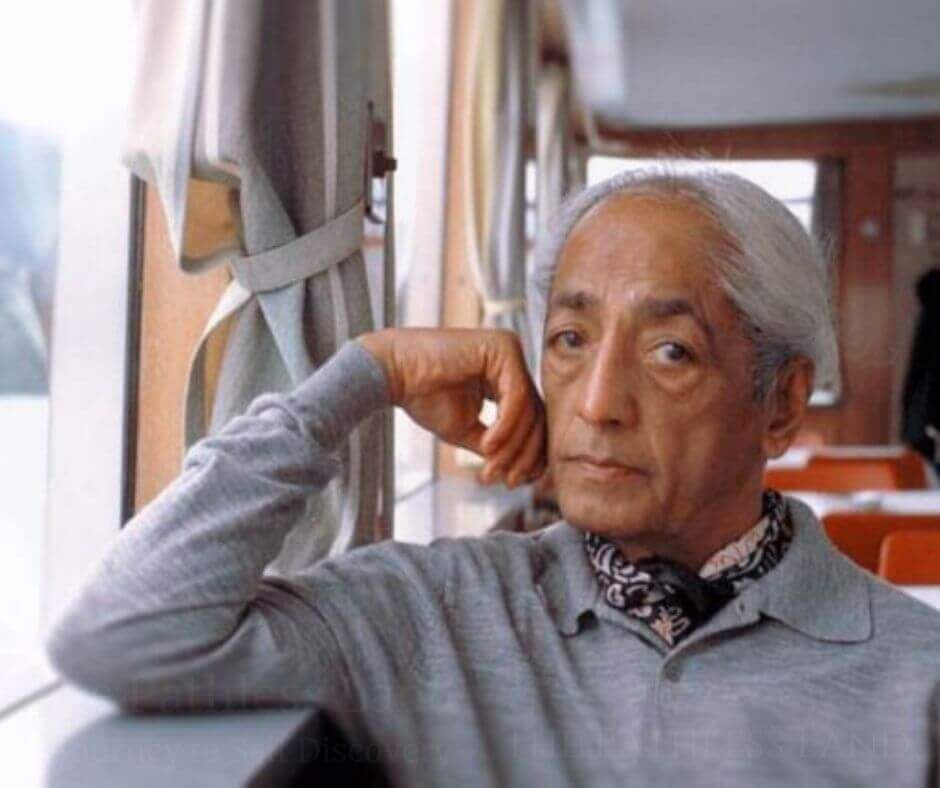
He travelled around the world till the age of 90 giving talks, writing, holding discussions. He talked of the things that concern all of us in our everyday life; the problems of living in modern society, the individual’s search for security, and the need for human beings to free themselves from their inner burdens of violence, fear and sorrow.
Physicist Dr David Bohm on J Krishnamurti
My first acquaintance with Krishnamurti’s work was in 1959 when I read his book The First and Last Freedom. What particularly aroused my interest was his deep insight into the question of the observer and the observed.
This question had long been close to the centre of my own work as a theoretical physicist who was primarily interested in the meaning of the quantum theory. In this theory, for the first time in the development of physics, the notion that these two cannot be separated has been put forth as necessary for the understanding of the fundamental laws of matter in general.
Because of this as well as because the book contained many other deep insights, I felt that it was urgent for me to talk with Krishnamurti directly and personally as soon as possible. And when I first met him on one of his visits to London, I was struck by the great ease of communication with him, which was made possible by the intense energy with which he listened and by the freedom from self-protective reservations and barriers with which he responded to what I had to say. As a person who works in science, I felt completely at home with this sort of response, because it was in essence of the same quality as that which I had made in contacts with those other scientists with whom there had been a very close meeting of minds. And here, I think especially of Einstein who showed a similar intensity and absence of barriers in a number of discussions that took place between him and me. After this, I began to meet Krishnamurti regularly and to discuss with him whenever he came to London.
Krishnamurti’s work is permeated by what may be called the essence of the scientific approach when this is considered in its very highest and purest form. Thus, he begins from a fact like the nature of our thought processes. This fact is established through close attention, involving careful listening to the process of consciousness, and observing it assiduously. In this, one is constantly learning, and out of this learning comes insight into the overall or general nature of the process of thought. This insight is then tested. First, one sees whether it holds together in a rational order. And then one sees whether it leads to order and coherence in what flows out of it in life as a whole.
Krishnamurti constantly emphasizes that he is in no sense an authority. He has made certain discoveries, and he is simply doing his best to make these discoveries accessible to all those who are able to listen. His work does not contain a body of doctrine, nor does he offer techniques or methods for obtaining a silent mind. He is not aiming to set up any new system of religious belief. Rather, it is up to each human being to see if he can discover for himself that to which Krishnamurti is calling attention and to go on from there to make new discoveries on his own.
(This is an extract from an article written by Dr Bohm in 1982. | Copyright © Krishnamurti Foundation of America)
Content reproduced with permission:
Permission to quote from the works of J. Krishnamurti or other works for which the copyright is held by the Krishnamurti Foundation of America or the Krishnamurti Foundation Trust Ltd has been given on the understanding that such permission does not indicate endorsement of the views expressed in this media. For more information about J. Krishnamurti (1895-1986) please see www.jkrishnamurti.org.